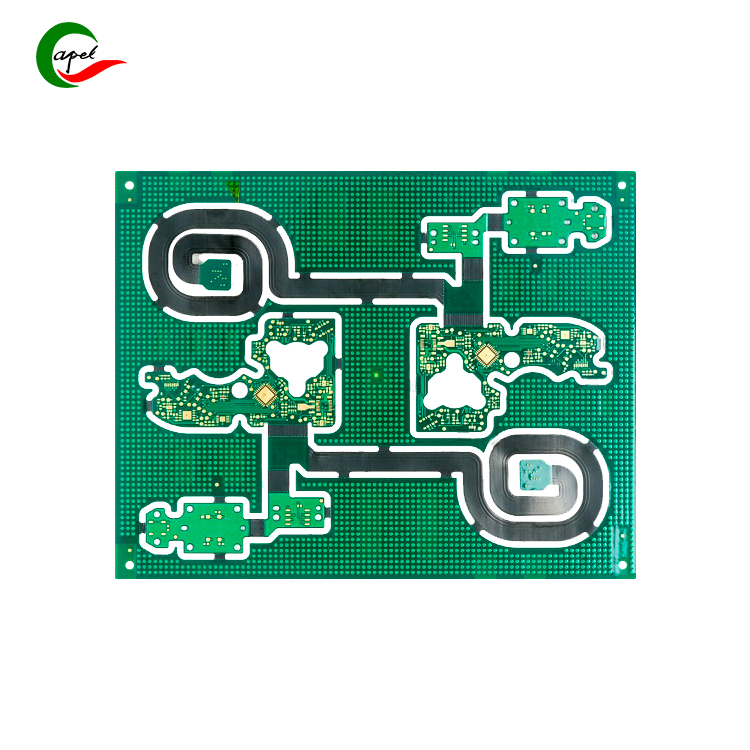In today’s fast-paced world, technological advancements constantly amaze us. We have always been surrounded by electronic devices that have become an integral part of our daily lives. From smartphones to wearables, laptops to tablets, these devices have become smaller, lighter and more efficient over time. One of the key factors contributing to this evolution is the continued development of high-density interconnect (HDI) technology. Capel will explore how HDI technology is changing and revolutionizing the electronic device industry, enabling the production of smaller and lighter devices while maintaining performance and efficiency.
Before delving into the contribution of HDI technology, it is important to understand what it means. HDI technology is a manufacturing process that creates tiny electronic circuits with higher component density and smaller interconnects. Unlike traditional printed circuit boards (PCBs), which have larger components and fewer layers, HDI boards have multiple layers, finer traces, and smaller components. This miniaturization is achieved through the use of advanced manufacturing techniques and materials that meet stringent manufacturing requirements.
So, how does HDI technology facilitate the development of smaller and lighter electronic devices? Let’s explore the key aspects:
1. Component miniaturization:
HDI technology allows the use of smaller, more compact electronic components. With reduced size, manufacturers can pack more functionality into a smaller footprint, creating sleeker, lighter devices. These tiny components, such as microcontrollers, integrated circuits and memory chips, are critical to the production of electronic devices, and HDI technology enables them to be integrated into smaller spaces.
2. Increased circuit complexity:
HDI technology is capable of creating highly complex circuit designs on multiple layers of a PCB. With the ability to interconnect components and route signals more efficiently, designers can incorporate advanced functionality without compromising space or performance. This sophisticated design flexibility enables manufacturers to create smaller, lighter devices with enhanced functionality, from high-speed data processing to sophisticated sensors and wireless connectivity.
3. Enhanced signal integrity and power management:
As electronic devices miniaturize, signal integrity becomes critical. HDI technology ensures optimal signal performance by reducing signal loss and noise interference. By carefully designing routing paths and maintaining controlled impedance, HDI boards provide better electrical characteristics, enabling faster data transfer and improved power management. This advancement not only helps reduce device size, but also improves overall performance and energy efficiency.
4. Durability and reliability:
Smaller, lighter electronic devices are more susceptible to physical stress, environmental factors, and transport vibrations. HDI technology addresses these issues by improving reliability and durability. Thanks to multiple layers and stronger interconnections, HDI boards can withstand mechanical stress, temperature changes and humidity, ensuring the longevity and reliability of electronic devices.
5. Achieve design innovation:
The ultra-compact nature of electronic devices enabled by HDI technology has sparked a wave of design innovation. Manufacturers and designers are free to explore unique form factors and creative product designs. From curved screens to flexible displays, HDI technology enables beautiful devices that were once just concepts.
Advances in HDI technology have revolutionized the electronics industry, enabling the development of smaller and lighter devices while maintaining or even increasing performance. Whether it’s a smartphone that fits comfortably in the hand, or a lightweight wearable device that blends seamlessly into our daily activities, HDI technology has played a vital role in enabling these advancements.
All in all, HDI technology contributes to smaller and lighter electronic devices by miniaturizing components, increasing circuit complexity, enhancing signal integrity and power management, improving durability and reliability, and enabling design innovation. As this technology continues to develop, we can expect even more impressive breakthroughs in small, lightweight electronic devices that further enhance our digital experiences.Shenzhen Capel Technology Co., Ltd. has been focusing on HDI PCB manufacturing since 2009. With 15 years of project experience accumulation and technological innovation, we use professional technical knowledge, advanced process capabilities, advanced production equipment and testing machines to provide High-quality, reliable and cost-effective solutions that meet customer requirements. Whether it is PCB prototyping or mass production, our team of experienced circuit board experts is committed to providing best-in-class HDI PCB solutions for your projects.
Post time: Aug-23-2023
Back







